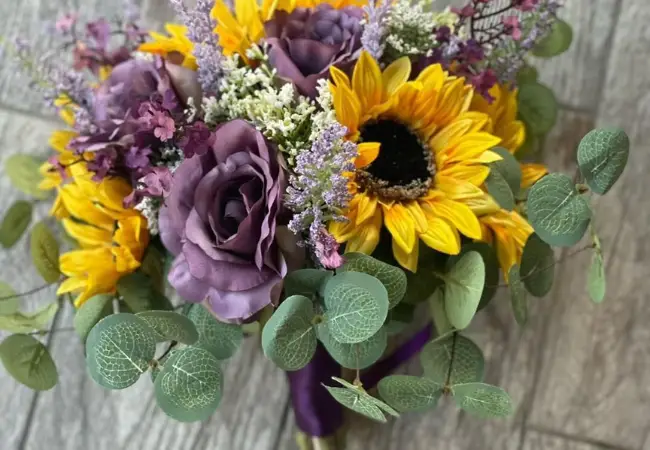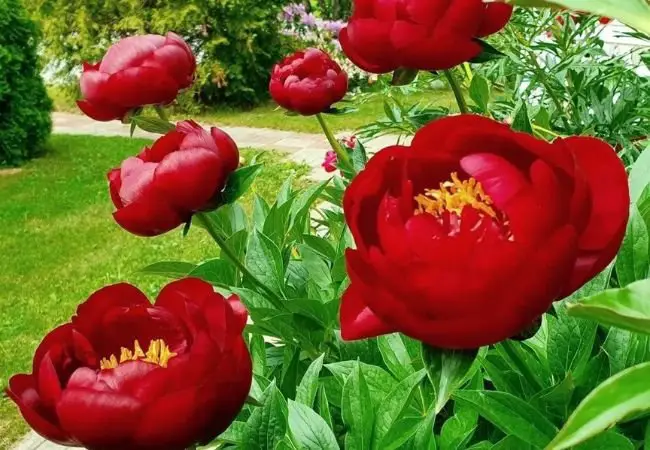Discover how to create a vibrant garden with Sunflowers and Purple Flowers . Learn expert tips on pairing, planting and care for a stunning yellow and purple color scheme. Perfect for gardeners of all levels.
Sunflowers and Purple Flowers create a striking and vibrant garden color scheme. This combination works well due to the complementary nature of yellow and purple on the color wheel. Popular purple companions for sunflowers include lavender, purple coneflowers and Russian sage. Proper planning for height, bloom time and growing conditions is crucial for a successful display.
Introduction to Sunflowers and Purple Flowers
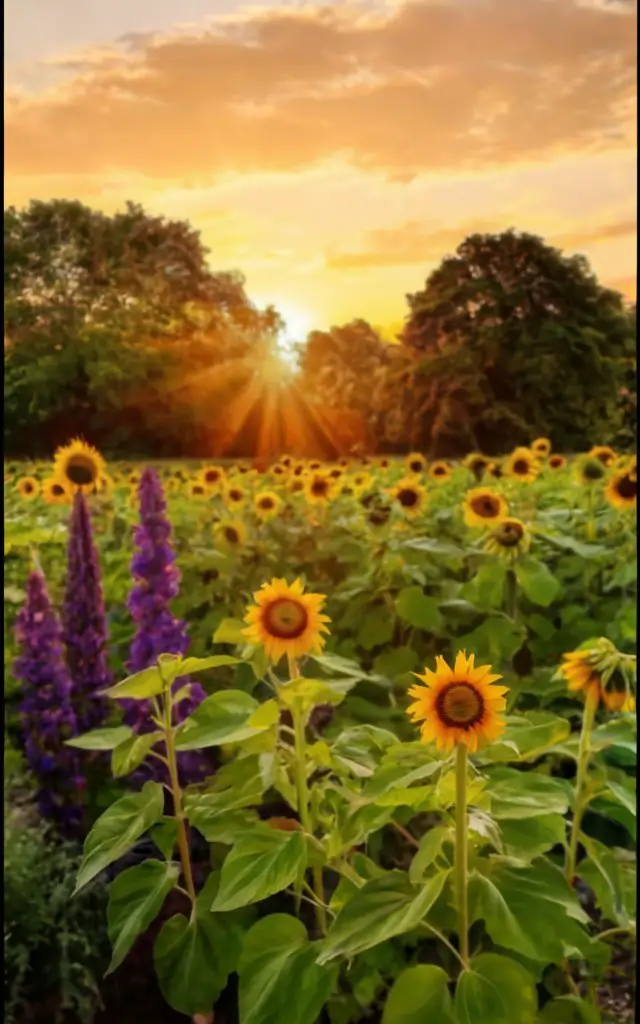
As a garden designer with over two decades of experience, I’ve found that the combination of sunflowers and purple flowers consistently creates breathtaking displays. This guide will help you master this color pairing in your garden.
Understanding Color Theory in Garden Design
The Power of Complementary Colors
Yellow and purple are opposite on the color wheel, making them complementary colors. This pairing creates a high-contrast, visually striking effect in the garden.
For more on color theory in garden design, visit the Royal Horticultural Society’s page on color in the garden.
Choosing the Right Sunflower Varieties
Popular Sunflower Options
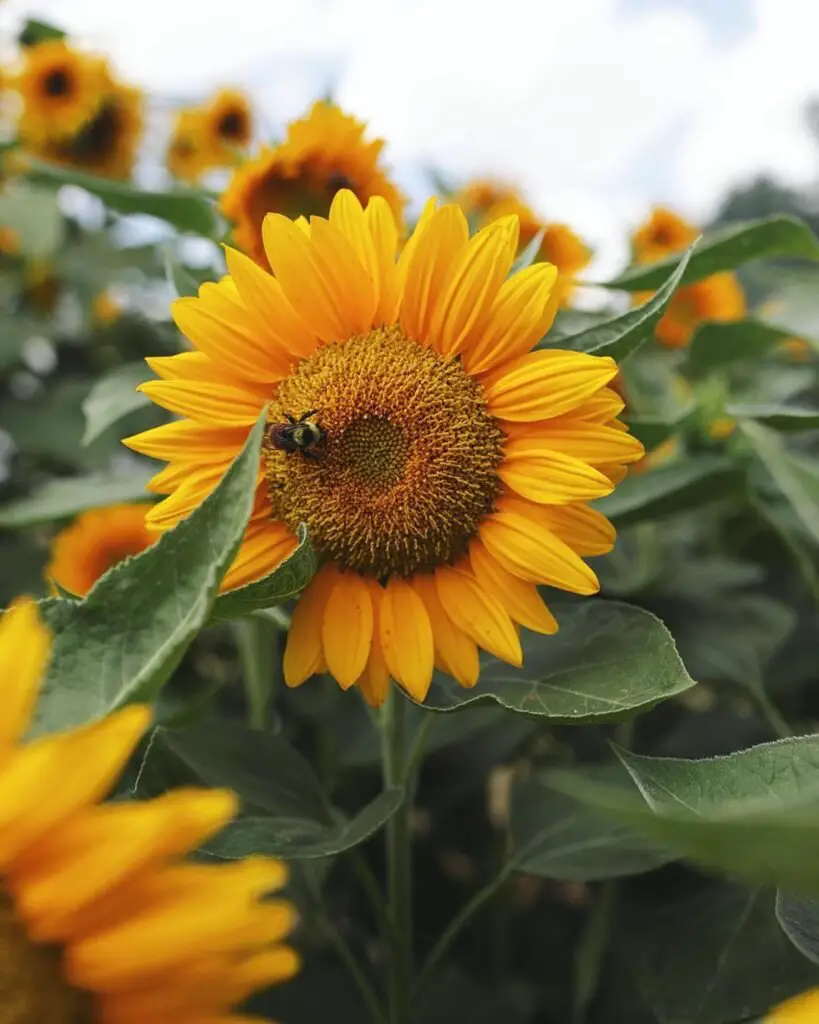
- ‘Sunrich Gold’: A classic yellow variety reaching 5-6 feet tall
- ‘Teddy Bear’: A dwarf variety with fluffy double blooms
- ‘Autumn Beauty’: Multi-colored blooms in shades of yellow, bronze, and burgundy
For a comprehensive list of sunflower varieties, check out the National Sunflower Association’s sunflower guide.
Selecting Purple Companions for Sunflowers
Height Considerations
Tall Purple Flowers (for behind or alongside sunflowers)
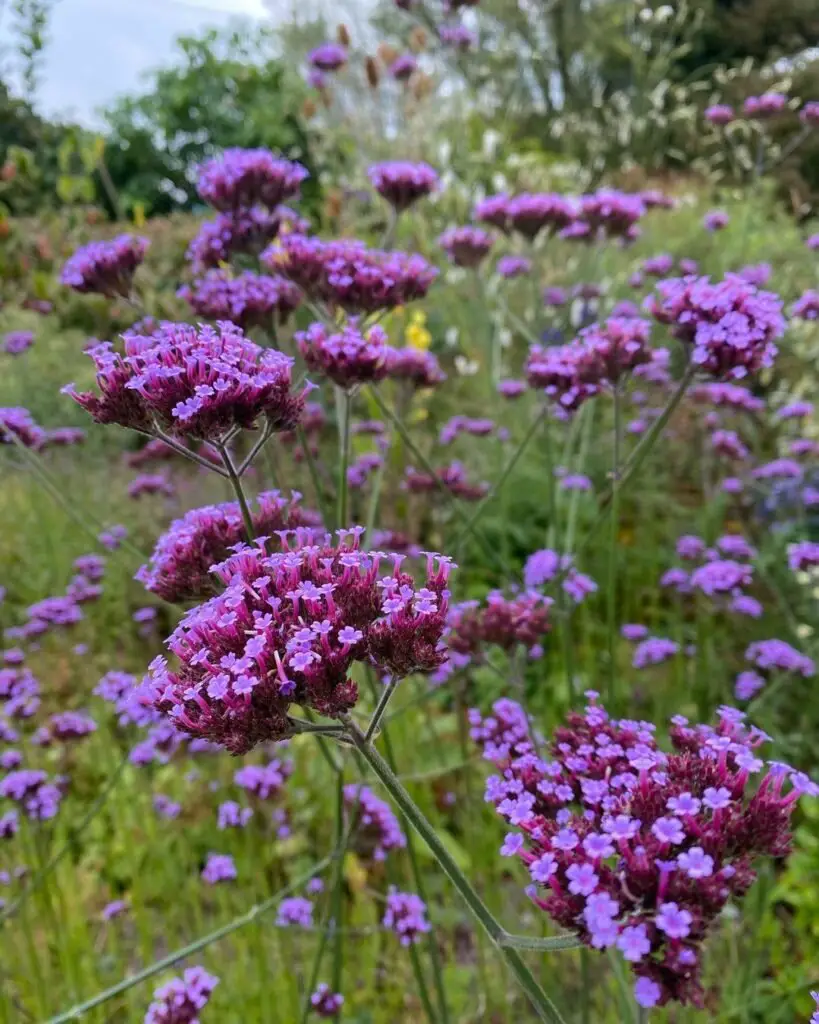
- Delphinium
- Verbena bonariensis
- Russian Sage (Perovskia atriplicifolia)
Medium-Height Purple Flowers
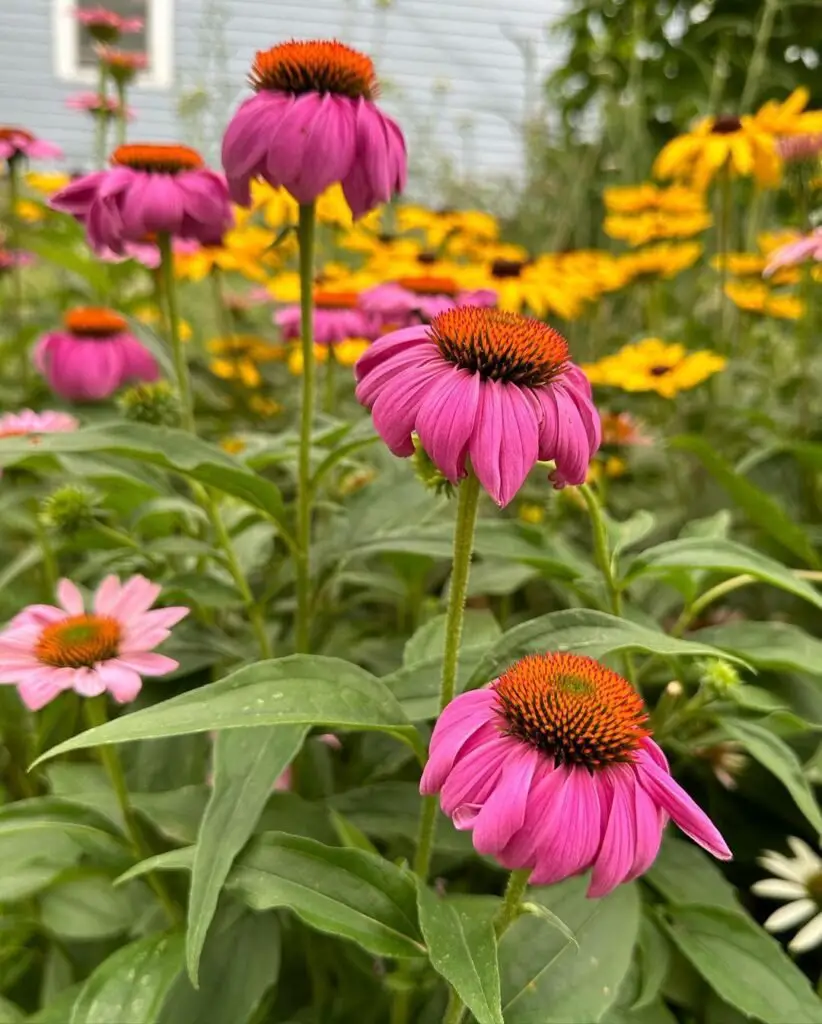
- Purple Coneflower (Echinacea purpurea)
- Lavender
- Salvia
Short Purple Flowers (for foreground)
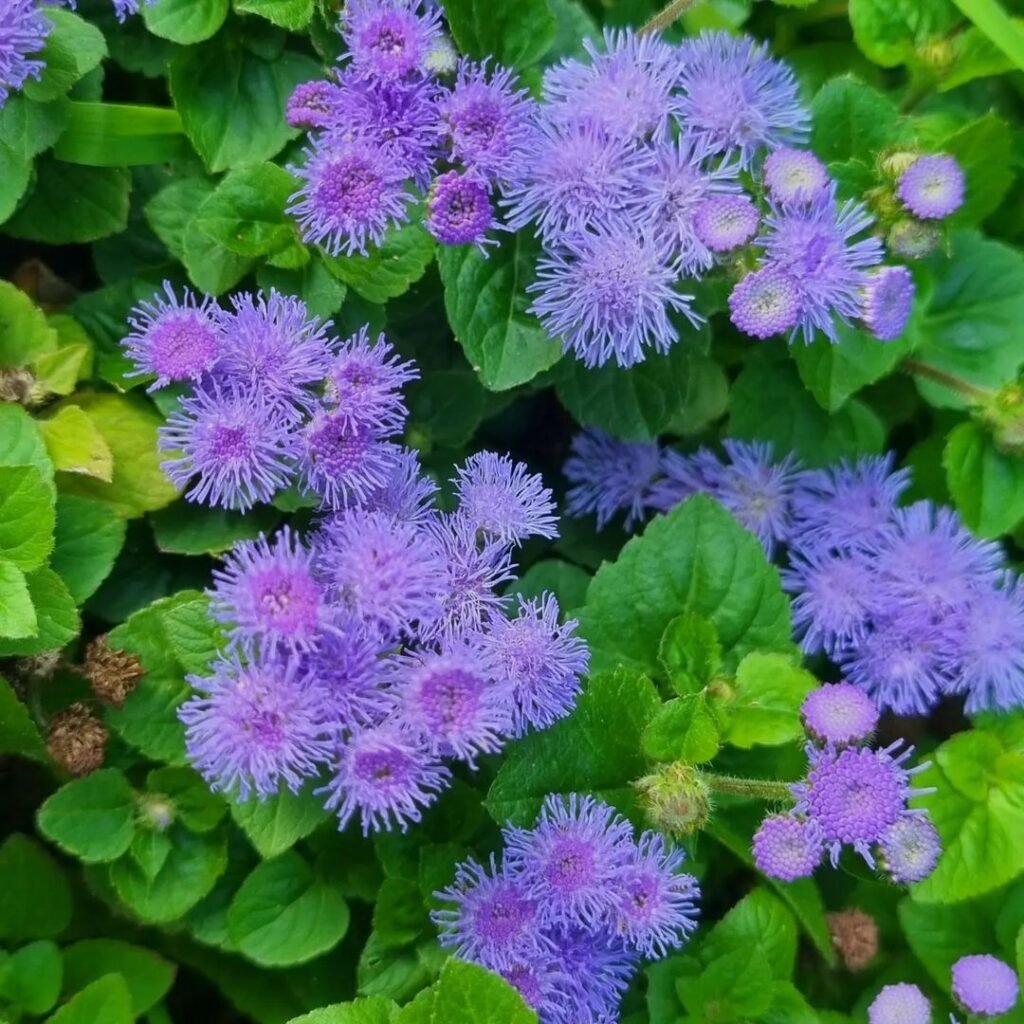
- Ageratum
- Viola
- Purple Alyssum
Bloom Time Synchronization
Choose purple flowers that bloom simultaneously with your chosen sunflower varieties for the best effect.
For information on bloom times, consult the USDA Plant Hardiness Zone Map.
Planting and Care Tips
Sunflower Planting
- Sow seeds directly in the garden after the last frost
- Choose a location with full sun and well-draining soil
- Space plants according to variety specifications
For detailed sunflower growing instructions, visit Cornell University’s Growing Guide for Sunflowers.
Purple Flower Planting
Planting methods vary by species. Generally:
- Prepare soil with organic matter
- Plant at appropriate depths and spacing
- Water thoroughly after planting
Maintaining Your Sunflower and Purple Flower Garden
Watering
- Most sunflowers and purple perennials prefer moderate watering
- Water deeply and less frequently to encourage deep root growth
Fertilizing
- Apply a balanced, slow-release fertilizer in spring
- Avoid over-fertilizing sunflowers, which can lead to weak stems
For more on garden fertilization, check out the University of Minnesota Extension’s guide to fertilizing the garden.
Pest and Disease Management
Common issues include:
- Aphids: Use insecticidal soap or neem oil
- Powdery Mildew: Ensure good air circulation and avoid overhead watering
- Sunflower Moths: Monitor and use appropriate insecticides if necessary
For pest management strategies, visit the Integrated Pest Management Program at UC Davis.
Design Ideas for Sunflower and Purple Flower Combinations
Cottage Garden Style
Mix sunflowers with lavender, purple coneflowers, and salvias for a charming, informal look.
Prairie-Inspired Design
Combine sunflowers with purple blazing star (Liatris) and Russian sage for a naturalistic feel.
Formal Garden Approach
Create structured beds with rows of sunflowers backed by tall delphiniums and fronted with neat borders of purple alyssum.
For more garden design inspiration, explore the Better Homes & Gardens plant encyclopedia.
Pairing sunflowers with purple flowers creates a visually stunning garden that celebrates the beauty of complementary colors. By carefully selecting varieties, considering height and bloom time, and providing proper care, you can create a magnificent display that will be the envy of your neighborhood. Remember to experiment with different combinations to find what works best in your unique garden setting. Happy gardening!
For more advanced color theory in garden design, consider exploring the work of renowned garden designer Piet Oudolf at Piet Oudolf’s official website.
For more gardening tips and plant care guides, visit usagardenhub.com.

